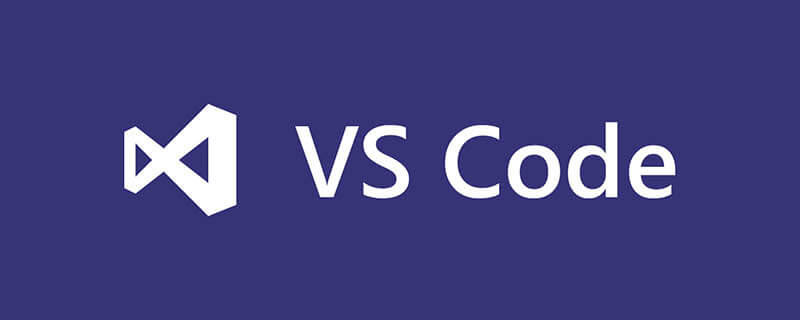
C token is the smallest independent unit of a program.
C is a superset of C, so most C constructs are legal in C and their meaning and usage remain unchanged. Therefore, tokens, expressions, and data types are similar to C tokens, expressions, and data types.
The following are C tags: (Most C tags are basically similar to C tags)
- Keywords
- Identifiers
- Constant
- Variables
- Operators
Keywords
Keywords are reserved words with a fixed meaning and their meaning cannot be changed. The compiler already knows what these keywords mean and how they work. C has more keywords than C, and these extra keywords do special jobs.
There are 32 of them, here are them
auto const double float int short struct unsigned break continue elseforlong signed switch void case default enumgoto register sizeof typedef volatile char do extern if return static unionwhile
There are another 30 reserved words that are not in C and therefore are new to C, Here they are -
asm dynamic_cast namespace reinterpret_cast try bool explicit new static_cast typeid catch false operator template typename class friend privatethis using const_cast inline public throw virtual delete mutable protected true wchar_t
Identifiers
Identifiers are names given to different items such as variables, structures, and functions. Furthermore, identifier names must be unique as these entities are used in the execution of the program.
Identifier Naming Convention
Only alphabetic characters, numbers, and underscores are allowed.
The first letter must be a letter or an underscore (_).
Identifiers are case-sensitive.
Reserved keywords cannot be used as names for identifiers.
Constants
Constants are like variables, except that once defined, their value does not change during execution.There are two other different ways to define constants in C. They are:
By using the const keyword
-
By using the #define preprocessor
li>
Constant declaration:
const [data_type] [constant_name]=[value];
Variables
A variable is a meaningful name for a location in computer memory where data is stored. When you use a variable, you refer to the computer's memory address.
Syntax for declaring variables
[data_type] [variable_name];
Example
#include <iostream.h>
int main() {
int a,b;// a and b are integer variable
cout<<" Enter first number :";
cin>>a;
cout<<" Enter the second number:";
cin>>b;
int sum;
sum=a+b;
cout<<" Sum is : "<<sum <<"\n";
return 0;
}Operators
C operators are used to perform mathematical or logical operations symbol.
- Arithmetic operators
- Increment and decrement operators
- Relational operators
- Logical operators
- bit Operator
- Assignment operator
- Other operators
Arithmetic operator
| Operator | Description | tr>
|---|---|
| Addition | |
| - | Subtraction |
| Multiplication | |
| Division | |
| Modulo |
| Description | |
|---|---|
| increment | |
| Decreasing |
| != | |
| > | |
| >= | |
#|| |
|
! |
|
| Bitwise Operator |
| != | |||||||||||||||||||||||||||||||||||||
| >> | |||||||||||||||||||||||||||||||||||||
| ~ | |||||||||||||||||||||||||||||||||||||
| & | |||||||||||||||||||||||||||||||||||||
| ^ | |||||||||||||||||||||||||||||||||||||
| | | |||||||||||||||||||||||||||||||||||||
Assignment Operator
Miscellaneous operators
|
The above is the detailed content of C/C++ markup?. For more information, please follow other related articles on the PHP Chinese website!
 (超详细)VScode中配置C语言环境的方法Dec 05, 2022 pm 07:05 PM
(超详细)VScode中配置C语言环境的方法Dec 05, 2022 pm 07:05 PMVScode中怎么配置C语言环境?下面本篇文章给大家介绍一下VScode配置C语言环境的方法(超详细),希望对大家有所帮助!
 c语言中node是什么意思Jul 06, 2022 pm 03:51 PM
c语言中node是什么意思Jul 06, 2022 pm 03:51 PM在C语言中,node是用于定义链表结点的名称,通常在数据结构中用作结点的类型名,语法为“struct Node{...};”;结构和类在定义出名称以后,直接用该名称就可以定义对象,C语言中还存在“Node * a”和“Node* &a”。
 c语言怎么将数字转换成字符串Jan 04, 2023 pm 03:20 PM
c语言怎么将数字转换成字符串Jan 04, 2023 pm 03:20 PMc语言将数字转换成字符串的方法:1、ascii码操作,在原数字的基础上加“0x30”,语法“数字+0x30”,会存储数字对应的字符ascii码;2、使用itoa(),可以把整型数转换成字符串,语法“itoa(number1,string,数字);”;3、使用sprintf(),可以能够根据指定的需求,格式化内容,存储至指针指向的字符串。
 c语言开根号运算符是什么Mar 06, 2023 pm 02:39 PM
c语言开根号运算符是什么Mar 06, 2023 pm 02:39 PM在c语言中,没有开根号运算符,开根号使用的是内置函数“sqrt()”,使用语法“sqrt(数值x)”;例如“sqrt(4)”,就是对4进行平方根运算,结果为2。sqrt()是c语言内置的开根号运算函数,其运算结果是函数变量的算术平方根;该函数既不能运算负数值,也不能输出虚数结果。
 c语言数组如何初始化Jan 04, 2023 pm 03:36 PM
c语言数组如何初始化Jan 04, 2023 pm 03:36 PMC语言数组初始化的三种方式:1、在定义时直接赋值,语法“数据类型 arrayName[index] = {值};”;2、利用for循环初始化,语法“for (int i=0;i<3;i++) {arr[i] = i;}”;3、使用memset()函数初始化,语法“memset(arr, 0, sizeof(int) * 3)”。
 c语言合法标识符的要求是什么Aug 27, 2020 pm 01:47 PM
c语言合法标识符的要求是什么Aug 27, 2020 pm 01:47 PMc语言合法标识符的要求是:1、标识符只能由字母(A~Z, a~z)、数字(0~9)和下划线(_)组成;2、第一个字符必须是字母或下划线,不能是数字;3、标识符中的大小写字母是有区别的,代表不同含义;4、标识符不能是关键字。
 c语言中源文件编译后生成什么文件Nov 23, 2022 pm 07:44 PM
c语言中源文件编译后生成什么文件Nov 23, 2022 pm 07:44 PMc语言编译后生成“.OBJ”的二进制文件(目标文件)。在C语言中,源程序(.c文件)经过编译程序编译之后,会生成一个后缀为“.OBJ”的二进制文件(称为目标文件);最后还要由称为“连接程序”(Link)的软件,把此“.OBJ”文件与c语言提供的各种库函数连接在一起,生成一个后缀“.EXE”的可执行文件。
 c语言可以处理的文件类型是什么Sep 19, 2022 pm 03:53 PM
c语言可以处理的文件类型是什么Sep 19, 2022 pm 03:53 PMc语言可以处理的文件类型是:文本文件和二进制文件。C语言所能够处理文件是按照存放形式分为文本文件和二进制文件:1、文本文件存储的是一个ASCII码,文件的内容可以直接进行输入输出;2、二进制文件直接将字符存储,不能将二进制文件的内容直接输出到屏幕上。


Hot AI Tools

Undresser.AI Undress
AI-powered app for creating realistic nude photos

AI Clothes Remover
Online AI tool for removing clothes from photos.

Undress AI Tool
Undress images for free

Clothoff.io
AI clothes remover

AI Hentai Generator
Generate AI Hentai for free.

Hot Article

Hot Tools

SublimeText3 Mac version
God-level code editing software (SublimeText3)

SAP NetWeaver Server Adapter for Eclipse
Integrate Eclipse with SAP NetWeaver application server.

MinGW - Minimalist GNU for Windows
This project is in the process of being migrated to osdn.net/projects/mingw, you can continue to follow us there. MinGW: A native Windows port of the GNU Compiler Collection (GCC), freely distributable import libraries and header files for building native Windows applications; includes extensions to the MSVC runtime to support C99 functionality. All MinGW software can run on 64-bit Windows platforms.

Dreamweaver CS6
Visual web development tools

WebStorm Mac version
Useful JavaScript development tools






